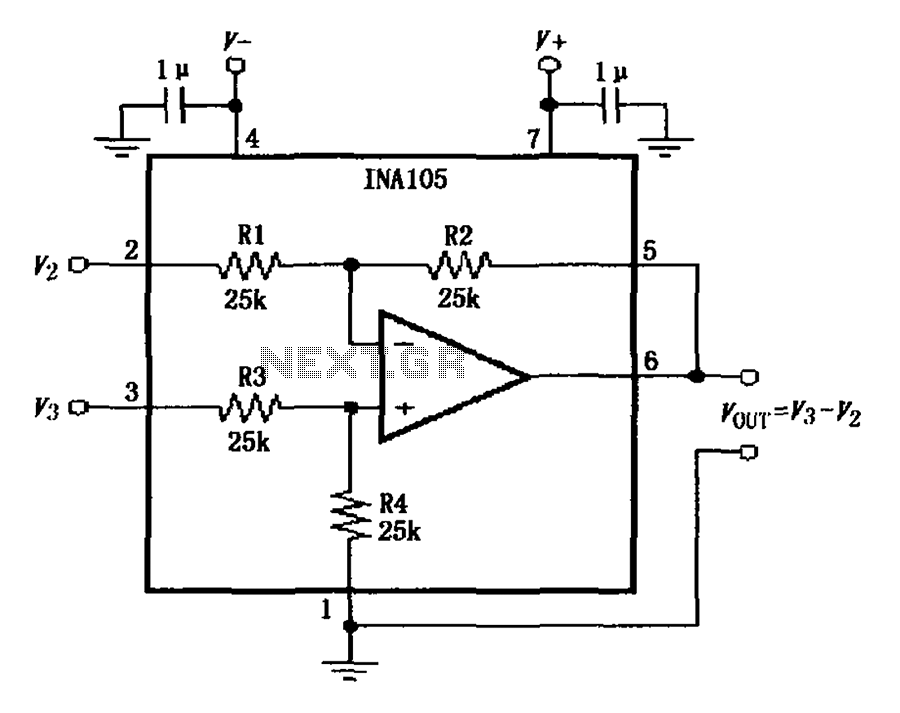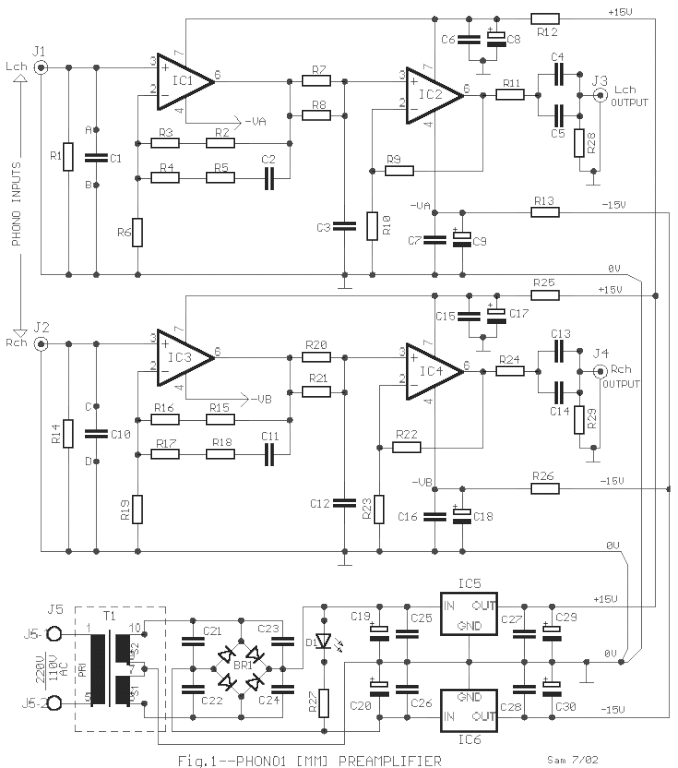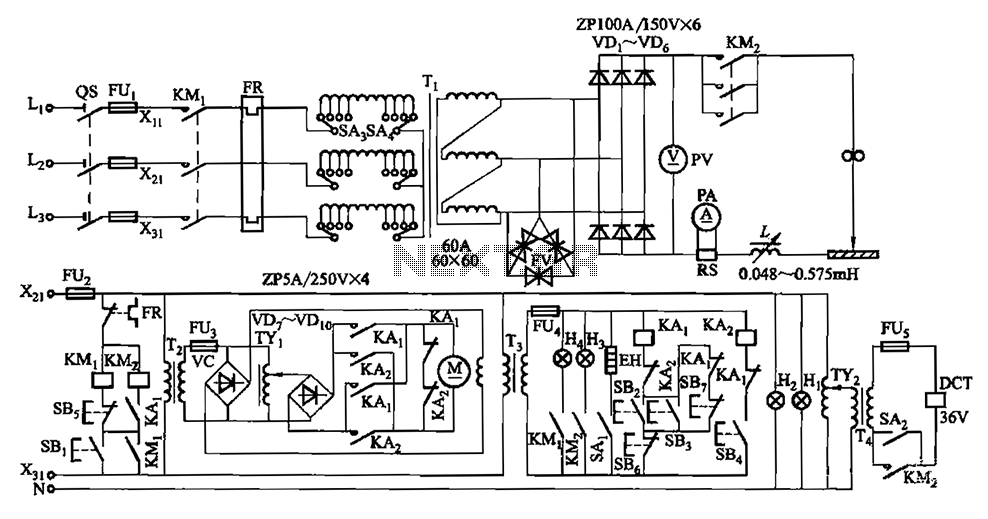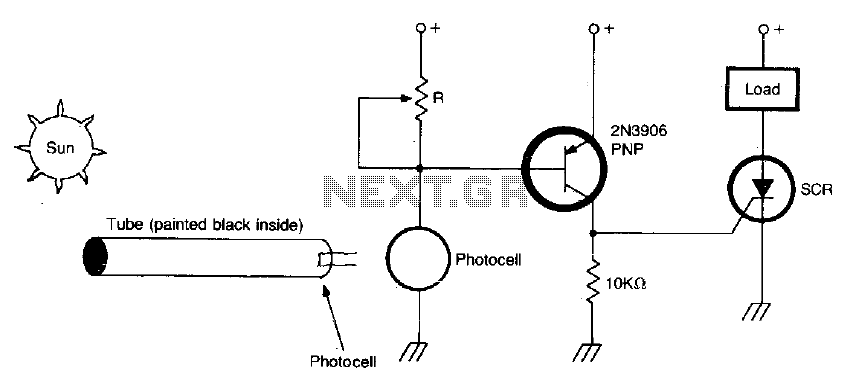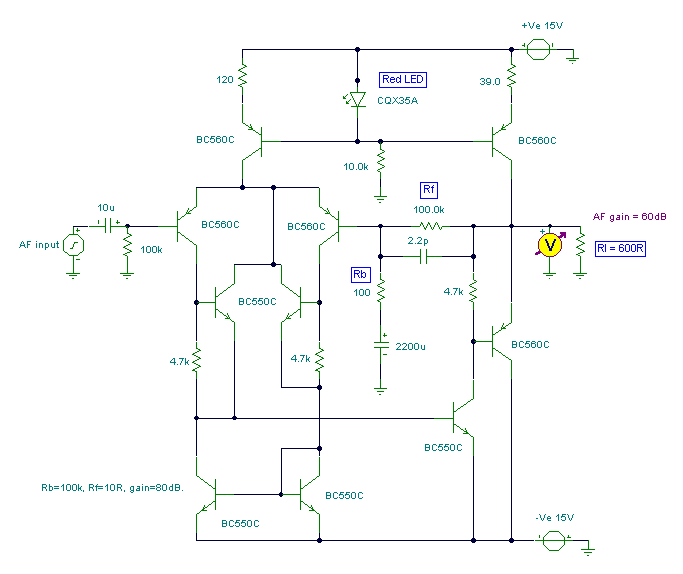
A Really Simple Power Amplifier
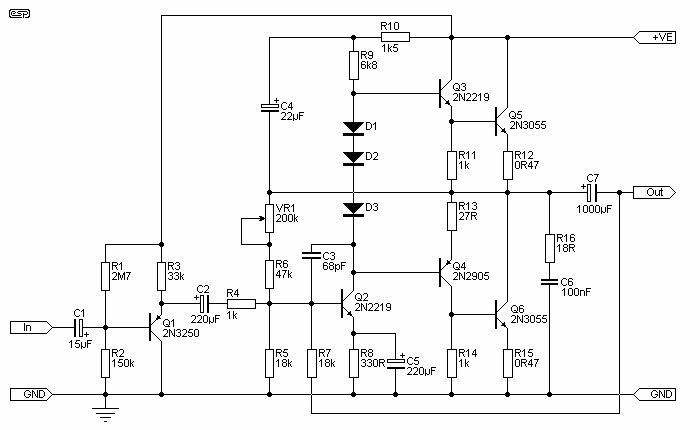
The amp was called "El Cheapo 2-30", and was rated at a maximum of 30W per channel into 16 Ohms. It used a single regulated power supply and capacitor coupled speaker. Having a scan of the original, the exact circuit details can now be reproduced. It was a very simple amp, and used quasi-complementary symmetry for the output stage.
The "El Cheapo 2-30" amplifier, as the name suggests, was a cost-effective solution for audio amplification needs. It had a power rating of 30W per channel, making it a robust choice for small to medium audio setups. The impedance of 16 Ohms indicates that it was designed to drive relatively low-power speakers, which is in line with its positioning as an affordable amplifier.
The use of a single regulated power supply suggests a focus on simplicity and cost-effectiveness. This design choice would have reduced the complexity of the circuit and also helped in minimizing the overall size of the amplifier. The power supply would have been responsible for converting the AC mains voltage to a DC voltage suitable for the amplifier's operation.
Further, the amplifier featured a capacitor-coupled speaker. Capacitor coupling is a common technique used in audio amplifiers to block DC components from the audio signal, thus preventing any potential damage to the speaker. This design choice would have helped in preserving the integrity of the audio signal while also protecting the speaker from any potential harm.
The use of quasi-complementary symmetry for the output stage is a notable feature of this amplifier. Quasi-complementary symmetry is a design technique used in power amplifiers to achieve high efficiency and low distortion. This technique uses a combination of NPN and PNP transistors in the output stage, which can help in achieving a more linear response and reducing harmonic distortion.
In summary, the "El Cheapo 2-30" was a simple and cost-effective amplifier that used a single regulated power supply and a capacitor-coupled speaker. The use of quasi-complementary symmetry in the output stage would have helped in achieving a high-quality audio output.The amp was called "El Cheapo 2-30", and was rated at a maximum of 30W per channel into 16 Ohms. It used a single regulated power supply and capacitor coupled speaker. Having a scan of the original, I can now reproduce the exact circuit details. It was a very simple amp, and used quasi-complementary symmetry for the output stage. 🔗 External reference
The "El Cheapo 2-30" amplifier, as the name suggests, was a cost-effective solution for audio amplification needs. It had a power rating of 30W per channel, making it a robust choice for small to medium audio setups. The impedance of 16 Ohms indicates that it was designed to drive relatively low-power speakers, which is in line with its positioning as an affordable amplifier.
The use of a single regulated power supply suggests a focus on simplicity and cost-effectiveness. This design choice would have reduced the complexity of the circuit and also helped in minimizing the overall size of the amplifier. The power supply would have been responsible for converting the AC mains voltage to a DC voltage suitable for the amplifier's operation.
Further, the amplifier featured a capacitor-coupled speaker. Capacitor coupling is a common technique used in audio amplifiers to block DC components from the audio signal, thus preventing any potential damage to the speaker. This design choice would have helped in preserving the integrity of the audio signal while also protecting the speaker from any potential harm.
The use of quasi-complementary symmetry for the output stage is a notable feature of this amplifier. Quasi-complementary symmetry is a design technique used in power amplifiers to achieve high efficiency and low distortion. This technique uses a combination of NPN and PNP transistors in the output stage, which can help in achieving a more linear response and reducing harmonic distortion.
In summary, the "El Cheapo 2-30" was a simple and cost-effective amplifier that used a single regulated power supply and a capacitor-coupled speaker. The use of quasi-complementary symmetry in the output stage would have helped in achieving a high-quality audio output.The amp was called "El Cheapo 2-30", and was rated at a maximum of 30W per channel into 16 Ohms. It used a single regulated power supply and capacitor coupled speaker. Having a scan of the original, I can now reproduce the exact circuit details. It was a very simple amp, and used quasi-complementary symmetry for the output stage. 🔗 External reference
